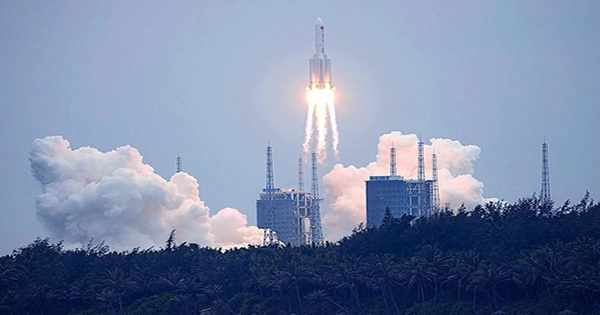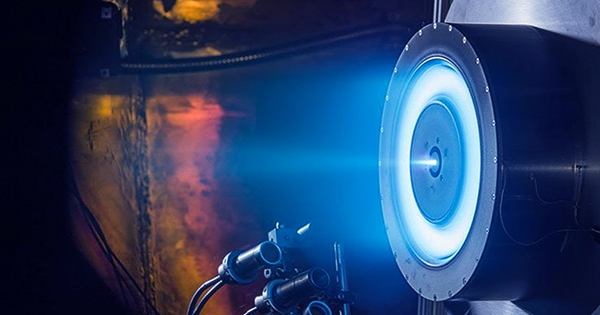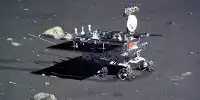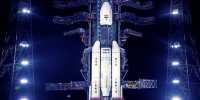Humans have always been drawn to discovering more about the world around us and learning everything we can about them. Although it’s not always simple, this is in our nature. NASA and its collaborators will bring Artemis, the first woman and person of color to set foot on the Moon, to the benefit of all people.
After two test flights, Artemis III, scheduled for 2025, will be the first time in more than 50 years that humans have visited the lunar surface. By launching the first humans to investigate the area around the lunar South Pole, NASA will go down in history.

On the way: The crew will travel to, from, and through lunar orbit while aboard NASA’s Orion spacecraft. Only Orion has the ability to bring crews back to Earth at the speeds necessary for reentering the moon. Orion’s specifically developed heat shield was recently put to the test in these challenging reentry conditions on the successful Artemis I mission. The Space Launch System (SLS), the only rocket potent enough to deliver Orion, its crew, and their supplies to the Moon in a single launch, will take off from Launch Pad 39B at Kennedy Space Center in Florida with four astronauts on board. The most diversified astronaut corps in history, each member possessing a special set of talents and having undergone extensive training, will be used to choose the crew.
Before operating Orion, the crew will launch into Earth orbit to inspect its systems and modify its solar panels. After that, Orion will use a translunar injection maneuver to determine its path for the Moon with the aid of a strong push from the intermediate cryogenic propulsion stage of SLS.
The crew will move toward the Moon for several days while making corrective engine burns to block the Moon’s gravitational attraction. Orion will execute a series of two engine burns at the appropriate moment and location to place the spacecraft in a lunar near-rectilinear halo orbit (NRHO). To accomplish the long-term objectives of Artemis, NASA chose NRHO from hundreds of feasible orbits. Near-constant connection with Earth and access to locations across the Moon will be made possible by NRHO. This orbit will maximize fuel economy because Earth and the Moon are gravitationally balanced. The Gateway lunar space station, which will be built by NASA and its allies in NRHO and act as a hub for Artemis missions, will be used on upcoming missions.
The human landing mechanism that will take the Artemis III crew from Orion in lunar orbit to the Moon’s surface and back has been chosen by NASA from SpaceX. To improve the overall effectiveness of their lander, SpaceX intends to employ an original operational strategy. SpaceX will launch at least one unmanned demonstration mission that lands Starship on the lunar surface following a number of tests. Starship won’t be ready for its maiden Artemis flight unless it satisfies all of NASA’s strict requirements and bar standards for crew safety.
SpaceX will send a storage depot to Earth orbit prior to the crew flight. Propeller for the human landing system will be delivered to the storage facility using a number of reusable tankers. The unmanned Starship human landing system will then be sent into Earth orbit, rendezvous with the storage facility, and fill its tanks before reaching for around six days to NRHO to meet the Artemis III crew.
In order to prepare for the first lunar surface expedition of the twenty-first century, Orion will dock with the Starship human landing system after both spacecraft have reached NRHO. Two astronauts will join Starship once the crew and their supplies are prepared, while the other two will stay in Orion. Orion will undock and move away from the Starship to stay in NRHO for around 6.5 days, or roughly one orbit of the Moon. The two-person surface crew will conclude their job on the surface in time to launch back up to meet the spacecraft when Orion completes its orbit because this will correspond to the length of the surface mission.
For the Artemis age of human lunar exploration, NASA has its eyes set on areas near the South Pole. Even while the region’s extreme and divergent conditions make it difficult for Earthlings to settle there, live there, and work there, its distinctive features have the potential to lead to hitherto unrecognized deep space scientific discoveries. The Starship’s crew will land at a carefully chosen location within a 100-meter radius using cutting-edge technology, including autonomous systems.
On the Moon: The surface crew’s first job will be to make sure all systems are prepared for their stay on the lunar surface after touchdown. They will then take a break, eat, and refuel in preparation for the expedition’s first full day.
The astronauts will do a series of moonwalks while on the Moon, leaving Starship to explore the surface, while also conducting scientific research within the spacecraft. Advanced spacesuits will be put on by the astronauts before they leave the airlock and board the Starship’s elevator. For the Artemis III surface suits and spacewalk systems, NASA has chosen Axiom Space. Compared to earlier lunar trips, these suits will allow the astronauts to move more freely and explore a wider area.
To accomplish specific scientific goals, the astronauts will gather data, explore geology, retrieve samples, and shoot photos and videos while on their moonwalks. Compared to images captured by Apollo missions in the Moon’s equatorial zone (like the one above), the view from the region around the South Pole of the moon will appear considerably different. The team will use headlamps and navigational aids to explore the area as the Sun hovers above the horizon, creating long, dark shadows. Our knowledge of the mysterious South Pole region, the Moon, and our solar system will improve as a result of the data and materials gathered by the Artemis III crew.
The crew will communicate with mission control personnel on the ground as they describe what they see, hear, and feel. They will be sharing a special new human experience with the globe through mission coverage and the capacity to deliver high-quality pictures and videos to the ground with cutting-edge communication equipment.
On the Journey Home: The two astronauts will launch from the Moon’s surface after finishing their surface exploration and return to NRHO in Starship to rejoin their crewmates in Orion. The crew will spend up to five days in orbit after docking, exchanging samples between the craft and getting ready for the return trip to Earth.
With all four men back in Orion when they reach the ideal NRHO departure point, they will undock and start the spacecraft’s engines, launching it past the Moon and enabling it to coast toward Earth. During reentry into Earth’s atmosphere, the crew will move at a speed of around 24,855 miles (nearly 40,000 kilometers) per hour. The spacecraft will splash down in the Pacific Ocean with the help of 11 parachutes, where it and the crew will be rescued by the U.S. Coast Guard and U.S. Navy.
One of the trickiest engineering and human creativity projects in the history of deep space exploration will be Artemis III. Our knowledge of our solar system and the home planet will be improved because of the astronauts’ views, samples, and data collection.
This mission will pave the way for a time when lunar access is routine for people and planetary exploration missions are feasible. As we get ready for the first manned voyage to Mars, each Artemis mission will advance our understanding, hone our methods, and validate our technology.














